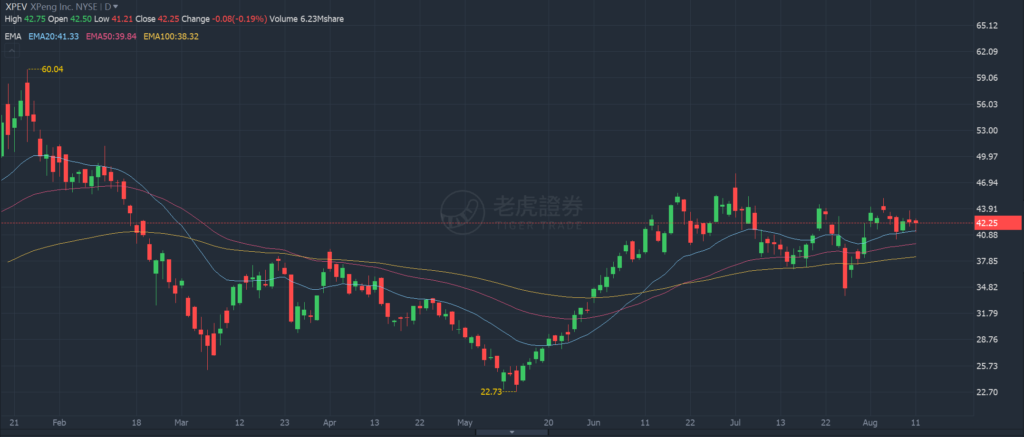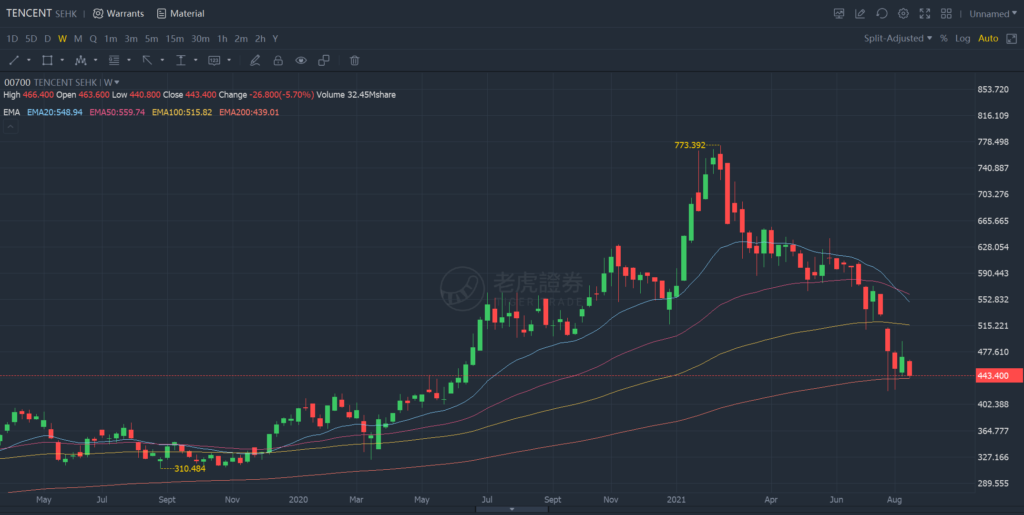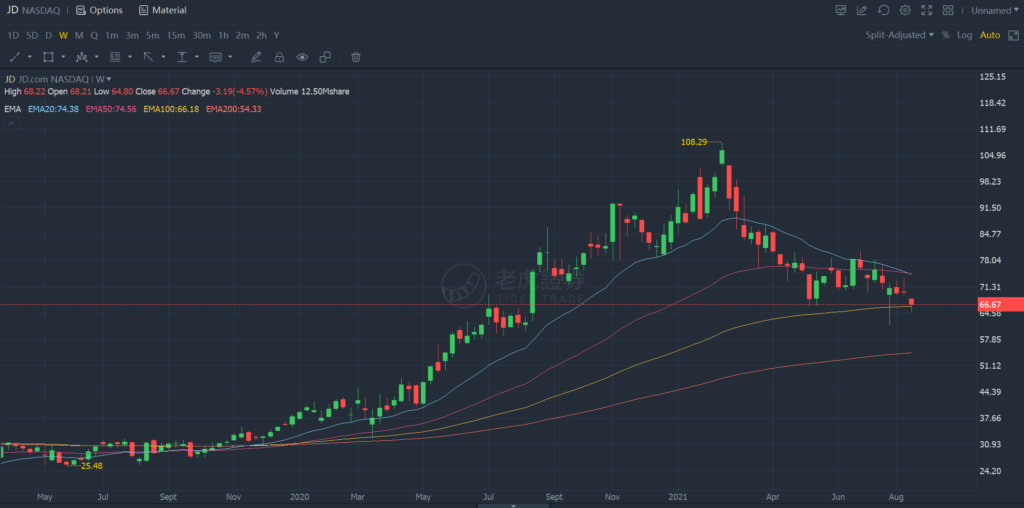In my previous article, I wrote about the importance of having the right mental mindset in order to enact a perfect execution strategy in investing.
Well, literally speaking, there isn’t a perfect execution strategy or formula that we can imposed all the time but we can strive to do better from time to time.
In this article, we’ll explore a little deeper about devising a game plan on Averaging Down as an investment strategy to our favour.
For the newbies who are not aware of this term, averaging down simply means buying and adding more shares at a lower price than your initial position, thereby reducing your overall average costs per share. You may hear someone else use the term dollar costs averaging or DCA, which essentially means the same.
Do note that this blog focuses on fundamentals first, technical second. As such, as and when we find that there is sufficient value in the company, we will consider purchasing and will use technical to aid our entry and exit positions.
Is Averaging Down an Effective Strategy?
The answer to this is it depends on a few factors you have at present.
This is not a simple strategy to employ lightly.
First, you need to have resources or what we often termed it as warchest.
The amount and depth of warchest you have does matter in employing your strategy so it is important that we speak about volume and depth.
In an ideal world where we have unlimited warchest, that would be nice. Every single time the stocks that you like drop, you get a chance to add to your position, without having any worries that your funds are going to run out. You can continue doing this for as long as the stock you own doesn’t suffer from permanent loss of capital – which is a risk that the structural fundamentals of the company has changed for the worst.
In a real world, many of us have a limited resource.
Our funds are likely to be limited and even so, we want to cap the positions that we have in a particular company or sector to the right amount of allocation (for example, not more than 35% position in a single company or something like that). This depends on one’s risk appetite towards an investment framework that he or she would believe in.
The second factor that is important to consider is regarding the company’s fundamental and business moat.
We spoke about the permanent loss of capital above and the very last thing we want is to keep adding our funds in a company that is not going to recover. That way, averaging down will simply just add on to the misery because you are ploughing in funds that you know are going to diminish in value over time.
In other words, you are doing compounding in a reverse manner and will soon drain your networth out.
Once you have sorted out the above two factors, then we can get down to business.
I will be using a variety of examples from the recent China market situation not just because of coincidental reasons that I happened to have most of my portfolio currently in China but also because of the volatility in nature.
You can implement the same strategy concept to any market that you have your investment in.
Averaging Down Technique 1
— Plain Vanilla Dollar Cost Averaging —
I want to start by introducing something that is really simple and straightforward – the Plain Vanilla Dollar Cost of Averaging down.
The Plain Vanilla DCA starts from your initial entry price (whatever it may be), and then slowly works your way down every time the share price hits a certain threshold that you have decided to average down. This can be 10% or 15% or 20% depending on your risk appetite.
It also depends on the availability of resource that we’ve discussed earlier. If you have 3 bullets for this position and you are willing to average down every time the stock is down by 20%, then you can approximately withstand approximately ~40% from your initial position (drawdown doesn’t count your initial position).
For instance, let’s assume you bought Xpeng Inc. (NYSE: XPEV) at the peak back in February when it was trading at $60. You bought your initial tranche at $60 and then horror happened over the next few weeks. The stock price continued to drop and soon reached your threshold limit of 20% where you now wanted to add to your second batch. So you added another tranche at $48 and still soon after that, the stock continued its downward plunge again. This time, you managed to add your third and final batch at a price of $36.
Now, you’re maxed out and you already have full allocations in this position.
The stock price continued to make low and hit the low of $22.73 in May which you no longer have the resource to continue adding further.
Your overall average price for the position is ($60 + $48 + $36) / 3 = $48.
Even though your positions are still down (the current trading price is at $42.25) at the moment, you can see the immediate benefit of plain vanilla averaging down strategy on your cost investment. You buy on your way down and then wait for it to recover as all good fundamentals company would.
This strategy is particularly useful to implement in a small corrective environment where as investors, you are not getting the bottom of the price (not many will anyway) but are participating in the overall market efficient hypothesis as well as an eventual reversion to the mean. You won’t let your emotions swayed you into thinking if it’s going to drop anymore tomorrow because you kept on sticking to your rules.

Averaging Down Technique 2
— Moving Average Support —
The Plain Vanilla DCA is good enough but we want to see if we can improve on the execution range.
In order to do this, we are going to not only randomly set up a range that we are comfortable with (either 10% or 15% or 20%) but we are going to do it systematically with a higher probability of support coming in. In other words, we are attempting our best effort to bottom fish through a systematic support in place.
This can be exemplified by introducing the moving average as a support level which we can average down on our positions.
The typical moving average is usually 20 days, 50 days, 100 days and 200 days and personally for myself I like to usually use weekly chart for mid-term investing (depending on your time frame, you may be more comfortable using daily if you are a shorter term investor or monthly chart if you are a much longer term investor).
So I’ll be demonstrating this using Tencent as a case study with 4 rounds of bullets availability (1 for initial + 3 additional for averaging down) into this position.
Most investors have their initial positions near the peak when situations are rosy and investors are comfortable putting their money into the stock market so I’ll attempt to start my initial entry at say $700.
Given the EMA20 and EMA50 are very close to one another since they are converging, I will use that as my next point of averaging, which is on the lower entry at $549.
The next rounds of averaging would be at the EMA100, which is at the $515 level. This is an 26% down from the initial price and 8% down from the previous round.
My last bullet would be at the EMA200 at $439, which is in my opinion the strongest level (aside than the monthly chart). You can also see that this EMA200 level was being tested during the previous 2018 crash which Tencent bottomed as well.
Combining all the 4 rounds of activity, the average price would then be ($700 + $549 + $515 + $439) / 4 = $550.
The stock is currently trading on the market at $443 so you are likely still underwater as of this writing but the fact that you have considered averaging down at important support level nevertheless pushes your average price down to a level which I think is a great price overall in any case.

Averaging Down Technique 3
— Margin of Safety in Focus —
We have the technique 1 and 2 which are already great but we want to execute it even stronger.
We can do this by focusing on the concept of margin of safety on our initial buying price by giving us room to steer across in case the market went into irrational form.
For those who are not familiar with the concept of margin of safety, they are essentially an important principle of investing where one would only purchase the company if it is trading below the intrinsic value. The larger the margin of error being considered – either through a conservative cashflow growth considered or higher discounted rate being applied, the higher the margin of safety for an investor.
While most investors don’t put too much value on the initial price, I think it’s a critical component especially if we’re trying to set the scene right when we want to average down at the later stage. This will also be particularly useful in a severe bear market scenario where you can have a very big gap down for a prolonged period of time.
Once we have applied the concept of margin of safety on the initial price, the rest is simply mental transactions knowing that every rounds that we average in gave us an even higher margin of safety. We can then applied using the technique 2 (moving average) to help us do that.
To exemplify, I will use this stock JD.com listed in the Nasdaq (you can use the one traded in HK market it’s also fine) as a case study.
For those of you who have not read my previous intrinsic value piece on JD, you can read it here.
In my article, I computed the intrinsic value of JD based on the information I had at that time to be at $111. The stock climbed to as high as $108 at the peak before dropping back down.
If you are someone who’s buying without considering any margin of safety, you would get in right at $108 and would be nursing your wounds at this stage. If you had considered the margin of safety, you would want to wait for a little while when the stock usually retrace back at say around $80, which is a 28% discount from the intrinsic value calculated. This would be your initial tranche.
Your next tranche of purchase would be at the EMA20 and EMA50 support level, which is not far from one another, so we’re going to take this as the first round of averaging down.
The next level is at $66 which is your EMA100 level on a weekly chart.
The EMA200 of $54 has so far not yet been breached so you’re currently saving your last bullet for this final support.
In total, you have put in 3 out of the 4 rounds and your average price would be at ($80 + $75 + $66) / 3 = $73.67.
This is exactly what I did, as screenshot below from the purchases I’ve made (I made some modifications to the strategy a little but the bigger concept is captured).
Am I still currently down? Yes, I am down about 9.4% as of this writing.
Am I worried? Totally not, I know I am getting at a good level and there is still one more opportunity to average down and if we focus on the fundamentals of the company and the free cash flow that the company generates it is just a matter of time before it will be in green (unless my analysis on JD is completely flawed).


My own position in JD.com
Averaging Down Technique 4
— Capitulation on the Play —
The last technique which I wanted to cover is to focus on the capitulation play.
We rarely get this “once or twice in the lifetime opportunity” – a metaphor, but it does exists from time to time.
In the financial terms, capitulation means giving up. This is when the market gets totally irrational and are selling off their positions regardless of the value that the asset is producing. This is made worse by the abundant of selling through deleveraging which makes the entire market even more volatile than they should be.
I was fortunate enough to have participated fruitfully in a few capitulation opportunities in my past 13 years of investing. Because of this experience, I tend to keep a special separate funds (you can call this your emergency stash funds or Rambo Dig A’ Hole Funds or anything you like) that I can activate just for this.
This does not necessarily means that I am keeping a stash of cash on the side, it is simply just a means of availability to tap funds when it is necessary (I’ll keep this post for another time since it’s going to take a long one to cover).
The capitulation technique adopts technique number 3 – which gives you a good start through investing prudently with the margin of safety considered and then subsequently work your way down. You can use technique number 2 but gives it a little modification. For instance, instead of averaging down on every immediate support level, you can mix it around by using both the weekly and monthly chart which is more reliable in the longer run.
The capitulation would then happen when there are more than 40%-50% drawdown from the initial price you entered. Remember that your initial entry price has already applied the margin of safety so that is already a 20%-30% safety right from the start. In total, we are looking at a 50%-60% drawdown on the market overall.
But someone would ask how would you know that a capitulation is taking place?
In my opinion, the signs are pretty obvious. The time when capitulation usually happens is when everyone knows it is cheap but is already out of funds and it is an incredibly quiet scene out there out of disbelief. Like Gristo said in his earlier book, you just know when capitulation happens on the market right in front of your eye.
When that happens, you know that the market is close to bottom or already bottomed and your weekly chart is likely to have a lookalike hammer formed on the candle soon enough. The bottom doesn’t usually last long and the market will soon realize that it is an opportunity to get back in.
Conclusion
I hope the above 4 technique is useful for someone who’s out there in the market thinking when is ever a good time to average down.
Unfortunately, averaging down is always mentally difficult for an investor because you are dealing with something which is going down in nature, throwing in doubts over whether your thesis in the company are flawed or the market is simply mispricing the information. Regardless, it can be a very fruitful strategy to have if you are absolutely sure that there is no permanent loss of damage and you can be rewarded well as a value investor in the long run.
I’ve been trying to refine the strategies over the years myself and obviously there are ways that we could make it better by adding flavours to the strategy such as by reinvesting the dividends or including options on the existing positions. But for the purpose of this article, let’s not make it overly complicated.
Let me know in the comments down below what you think and if you have anything to share with yours’.
Note: The above illustrations are done using Tiger Broker platform. If you like what you see and would like to give it a try, do use my exclusive invitation code 4321CP or simply by clicking here. You’d be entitled to a Tiger reward of free shares and other gifts the moment you start depositing and putting your money to work.
Disclaimer: This is a collaboration post with Tiger Brokers and the article contains an affiliate link that will entitle me to a small reward for every successful registration you make. All opinions stated above are based on my own experience navigating the platform and use on my own.
Join our Facebook page for more updates!
Join our Instagram page for more inspirations!




Hi Brian,
Thanks a lot for sharing your analytics and thoughts on the recent bloodbath in China tech stocks. Very intellectual insights wor for the past few articles posted….appreciate man! I have been taking up various small positions and averaging down my initial holdings in Alibaba. The recent announced results are good actually but the price kept dropping like flies which scares the hell out of me.
Hi BK
You’re welcome!
You are an experienced investor, you probably know we are likely in the capitulation mode, where price keeps dropping, investors realize there is more value but even more afraid to go in and catch the falling knife. There isn’t really a perfect strategy to this other than just looking at how well we can defend our turfs. The rainbow would usually follow, although we don’t know when.
uncle168,
the first fully vaccinated death has happened all thanks to the greedy & stupid 4g leaders and vaccination lies.
the gov did not tell the people up front about the risk of vaccination injuries and death and the gov cannot sue the manufacturer as it is now sold as an experimental drug with zero liability clause.
it is like the opium war, you pay to get addicted to a useless vaccine that has so many side effects it will never be approved in normal times.
this gave people false hope and fully vaccinated people threw caution to the wind exposing themselves to the deadly b1617..
when you go for surgery the doctor will tell you the odds of death not the chance of survival.
a good doctor will not keep telling you the benefit outweighs the risk.
a greedy doctor or minister would as money is more important than your lives.
only china hk taiwan and new zealand gov care about the people’s lives and not their year end bonus and kpi.
the b1617 has learned how to attack the lungs even if the person is fully vaccinated all thanks to oyk.
evolution has made b1617 super strong as it has to keep mutating to survive the high vaccination rate in sg.
elderly and hiv vaccinated were the perfect host for covid to upgrade their ability to mutant and evade vaccine immune response.
the gov should stop vaccination and ban dining in as unlinked cases have doubled from 9 to 14 just 1 week after relaxing dine in rules.
in the next few days unlinked cases will surge as fully vaccinated fools dine in and get admitted to icu.
every day many fully vaccinated will die believeing the gov that the vaccine will protect them from covid.
the new zealand pm tells the people the hard truth not like ours more concern about their promotion and bonus.
the wp also never question the pap stupid opening strategy that is doomed to fail.
covid is not a common cold, once you open up is not 100 die a year leh, it is 100 die a day, or 36.5k death a year.
even the sdp doctor sounds like an idiot, covid can never be endemic, it is like hiv, it will keep killing until there is nobody left to kill.
we need a long term isolation strategy not a bunch of fools still celebrating ndp wasting our resources during a pandemic.
keekeekee
uncle168,
sph shareholders should not vote for the approval of the proposed spin off of the media business.
it is a bad deal for shareholders whom mostly have brought at S$4 with the implied guarantee that the gov will not let the state media collapse as it is the only mouth piece for the government on print media.
sph shareholders should instead call for an egm to liquidate the media business which will be cheaper than giving away the media business to the gov and even have to pay the gov money which is ridiculous.
sph shareholder should only accept an all cash offer of S$3.68 for the entire sph by temasek as the crown jewel with 899 year lease paragon can be sold to sph reit 9 more times at S$1.8B each time with a total valuation of S$16.2B with a possible minimum share price of 5 times current market valuation of S$10 per share in 1,000 years time.
then the gov can do whether it wants with the newspaper nobody reads.
keekeekee
uncle168,
without vaccination
At 102, she fought and beat Covid-19
https://www.straitstimes.com/singapore/health/at-102-she-fought-and-beat-covid-19
with full vaccination
90-year-old man dies from Covid-19 complications, the first death of fully vaccinated person in S’pore
https://www.straitstimes.com/singapore/community/90-year-old-man-dies-from-covid-19-complications-the-first-death-of-fully
the real defence for covid is exercise, sleep and healthy diet + durians to build a strong immune system which has protected us since we evolved from apes not some stupid vaccine that has so many side effects making billions for the vaccine companies that cannot be sued if you die from taking it.
keekeekee